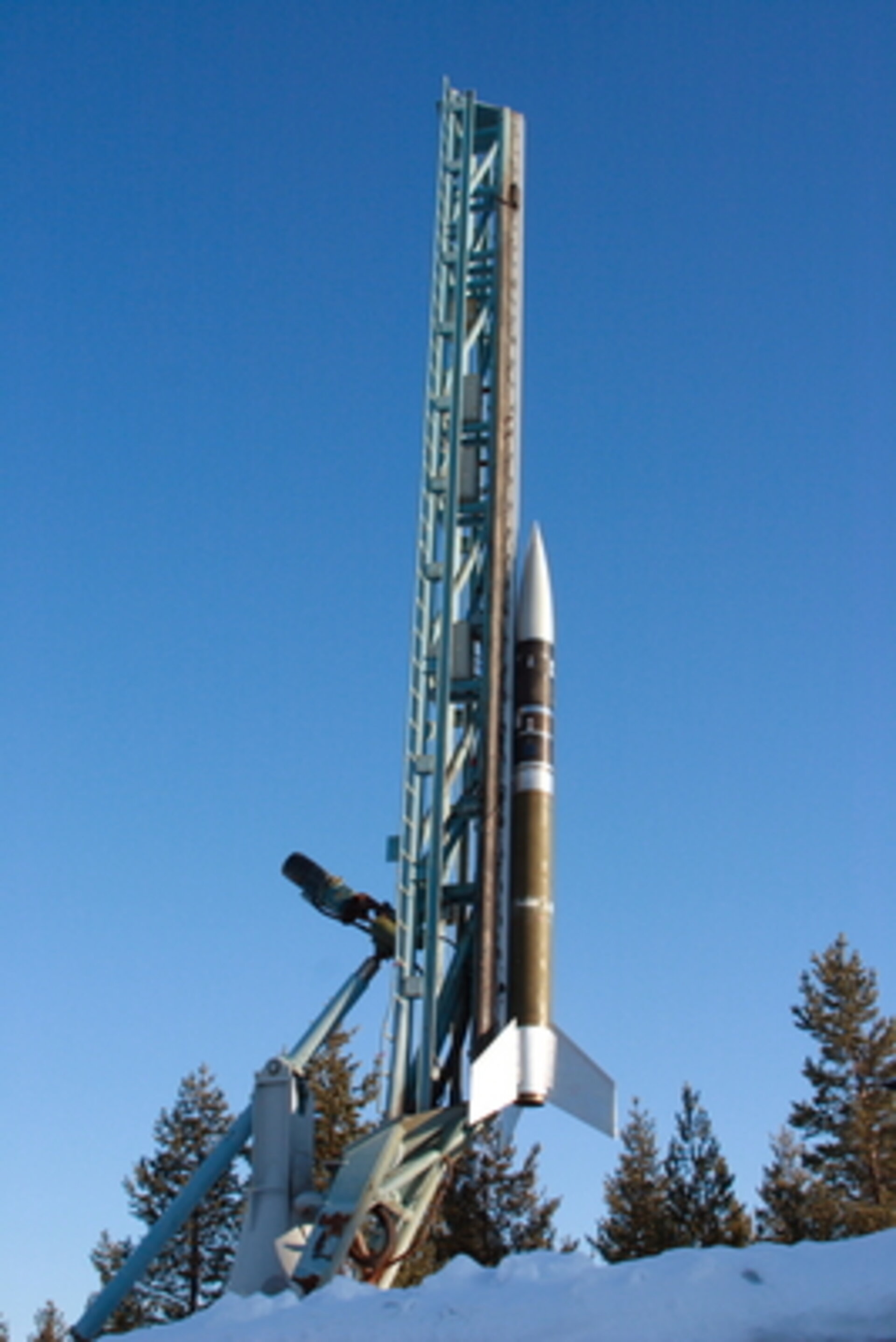Student teams selected to take part in sounding rocket and balloon campaigns
Following a workshop held 5-6 March at the European Space Technology and Research Centre (ESTEC) in the Netherlands, 8 student teams from various ESA Member States and Co-operating States have been selected to fly their experiments on future sounding rocket and balloon campaigns.
The Workshop followed on from an announcement of opportunity issued by the ESA Education Office in November 2007 for the REXUS and BEXUS programmes (Rocket / Balloon EXperiments for University Students). After evaluation of the initial proposals, a number of shortlisted teams were invited to present their proposals to experts from ESA and Esrange during the workshop. The final flight selection was made on 7 March. The winners join six teams chosen earlier in the week for the same flights by the German Aerospace Centre (DLR).
"The students were all very enthusiastic, and they presented some diverse and interesting experiments," said Helen Page of ESA’s Education Office.
The experiments selected for the REXUS sounding rocket campaign are:
Nordic Ionospheric Sounding rocket Seeding Experiment (NISSE) - University of Bergen, Norway, University of Oulu, Finland & Finnish Meteorological Institute
Water will be released into the ionosphere to form a cloud of ice crystals that will be visible from the ground. The water molecules will be ionized by solar radiation and travel along magnetic field lines, forming patterns that will be analysed using the EISCAT radar.Itikka - Castor Space Club of the Tampere University Of Technology
A test of an inertial measurement unit. They will analyse its performance in the high acceleration, high angular velocity and high vibration environment and search for unexpected sources of errors.-
Vibration effects on biphasic fluids (VIB-BIP) - Universitat Politecnica de Catalunya, Spain
A study of the behaviour of a biphasic fluid (a liquid containing gas bubbles) in a microgravity environment when vibrations are applied to the system.
The experiments selected for the BEXUS balloon flights are:
TimePix@Space - Lulea University of Technology, Sweden, Charles University Prague and Czech Technical University, Czech Republic
Detection of particles in the stratosphere using a hybrid imaging pixel detector developed at CERN.Stratospheric Census - An international team of students from the ‘Erasmus Mundus’ Space Masters course, currently based at Luleå University of Technology, Sweden
Using innovative nanofilters combined with a strong airflow from a power-effective air pump to gather dust particles for study with advanced sample-return analysis techniques.Stratosphere and Magnetic Field Polar Explorer (AURORA-SMF Polar Explorer) - Scuola di Ingegneria Aerospaziale, Rome, Italy
An investigation of the polar lights phenomenon by mapping the properties of the stratospheric environment.Low Cost Inertial Navigation System (Low.Co.I.N.S.) - La Sapienza University of Rome, Italy
Design and validation of an inertial measurement unit built with low cost sensors and components.-
Icarus - Romanian Space Agency, Romania and Warsaw University of Technology, Poland
A study of lifting body technology by releasing a glider from the balloon and piloting it to a designated landing zone by remote control.

Three of the successful ESA-sponsored teams will have the opportunity to place their experiments on the REXUS 5 and 6 sounding rockets, to be launched from Kiruna, Sweden, in March 2009. The payloads developed by the other five teams will fly on the BEXUS 6 and 7 stratospheric balloons that will be launched from Kiruna in September 2008.
Each flight will carry a payload consisting solely of student experiments. Half of the overall payload is available only to German students through a DLR Announcement of Opportunity, while the other half is opened up to students from all other ESA Member States and Co-operating States by the Swedish National Space Board (SNSB) through a collaboration with ESA.
A preliminary design review of each experiment will be carried out during a training week at Esrange in Kiruna, Sweden, from 21-25 April 2008. The students will build their experiments during the summer (in the case of BEXUS) and up to the end of 2008 (in the case of REXUS). The student teams are responsible for funding the development of the experiments and their shipment to Esrange, in collaboration with their universities or other sponsors.
ESA has agreed to sponsor up to four members from each team to attend the training week at Esrange and the REXUS and BEXUS launch campaigns. The sponsorship covers student travel, accommodation and other related expenses.
All costs related to the rockets, balloons and launches are covered under the bilateral Agency Agreement between SNSB and DLR regarding the REXUS and BEXUS programmes. Esrange experts will provide technical support in the integration and testing phase, as well as providing campaign management and operations.
EuroLaunch, a joint venture of Esrange (Swedish Space Cooperation) and the Mobile Rocket Base MORABA (DLR) is responsible for the integration and testing phase, as well as the campaign management and operations of both the REXUS suborbital sounding rockets and the BEXUS balloons.
The next announcement of opportunity to fly experiments through the REXUS and BEXUS programmes will be issued in September 2008. These flights will take place during 2009 and 2010.




